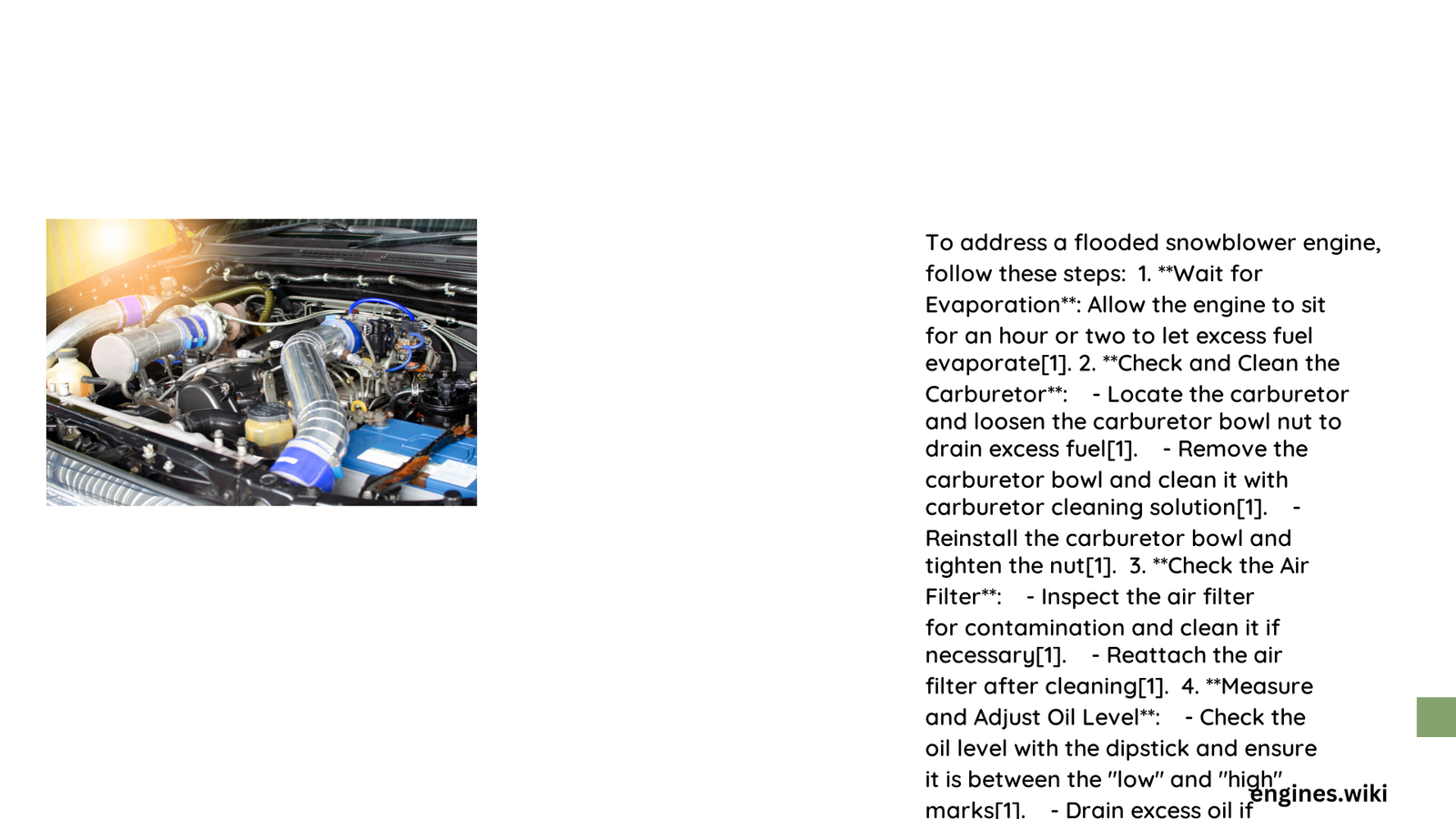When a snowblower engine becomes flooded, it can quickly turn a simple snow-clearing task into a frustrating experience. Excess gasoline in the combustion chamber prevents proper ignition, causing the engine to stall or refuse to start. Understanding the precise steps to diagnose and resolve a flooded engine can save time, prevent potential damage, and get your snow-clearing equipment back in operation swiftly.
What Causes a Snowblower Engine to Flood?
Why Does Excessive Fuel Accumulate?
Snowblower engine flooding typically occurs due to several critical factors:
- Choke Misuse
- Leaving choke engaged too long
- Repeated unnecessary priming
-
Incorrect starting procedure
-
Mechanical Issues
- Carburetor malfunction
- Dirty air filters
- Degraded fuel quality
How to Identify Engine Flooding?
| Symptom | Indication | Severity |
|---|---|---|
| Strong Gasoline Odor | Excess fuel in exhaust | Low |
| Difficult Engine Turnover | Increased mechanical resistance | Medium |
| Wet Spark Plug | Direct combustion chamber flooding | High |
Step-by-Step Flood Recovery Process

How to Remove Excess Fuel?
- Spark Plug Removal
- Carefully extract spark plug
- Allow complete fuel drainage
-
Inspect plug condition
-
Engine Ventilation
- Turn engine over multiple times
- Use manual crank or electric starter
- Ensure no compression during process
What Cleaning Steps Are Necessary?
- Clean or replace fouled spark plug
- Check spark plug gap
- Inspect for porcelain damage
- Verify proper electrode condition
Advanced Troubleshooting Techniques
How to Prevent Future Flooding?
Maintenance Checklist:
– Use fresh, stabilized fuel
– Clean air filter regularly
– Service carburetor annually
– Follow manufacturer’s starting instructions
– Store snowblower properly during off-season
What Are Potential Repair Costs?
| Component | Replacement Cost | Complexity |
|---|---|---|
| Spark Plug | $5 – $15 | Low |
| Carburetor Cleaning | $50 – $100 | Medium |
| Full Carburetor Replacement | $100 – $250 | High |
Professional Recommendations
When to Seek Expert Help?
- Persistent flooding after multiple attempts
- Visible mechanical damage
- Complex carburetor issues
- Electrical system complications
Key Prevention Strategies
- Always use fresh fuel
- Add fuel stabilizer before storage
- Perform regular maintenance
- Follow manufacturer’s starting procedures
Technical Insights
Snowblower engines require precise air-fuel mixture for optimal performance. Flooding disrupts this delicate balance, preventing efficient combustion. Understanding your specific model’s requirements and maintaining proper starting techniques can significantly reduce the likelihood of engine flooding.
Pro Tip: Keep a maintenance log to track your snowblower’s performance and identify potential issues before they escalate.
Safety Considerations
- Work in well-ventilated area
- Wear protective gloves
- Disconnect spark plug wire during maintenance
- Allow engine to cool before inspection
Reference:
– Snow Blower Maintenance Guide
– Small Engine Repair Resources
– Winter Equipment Care
